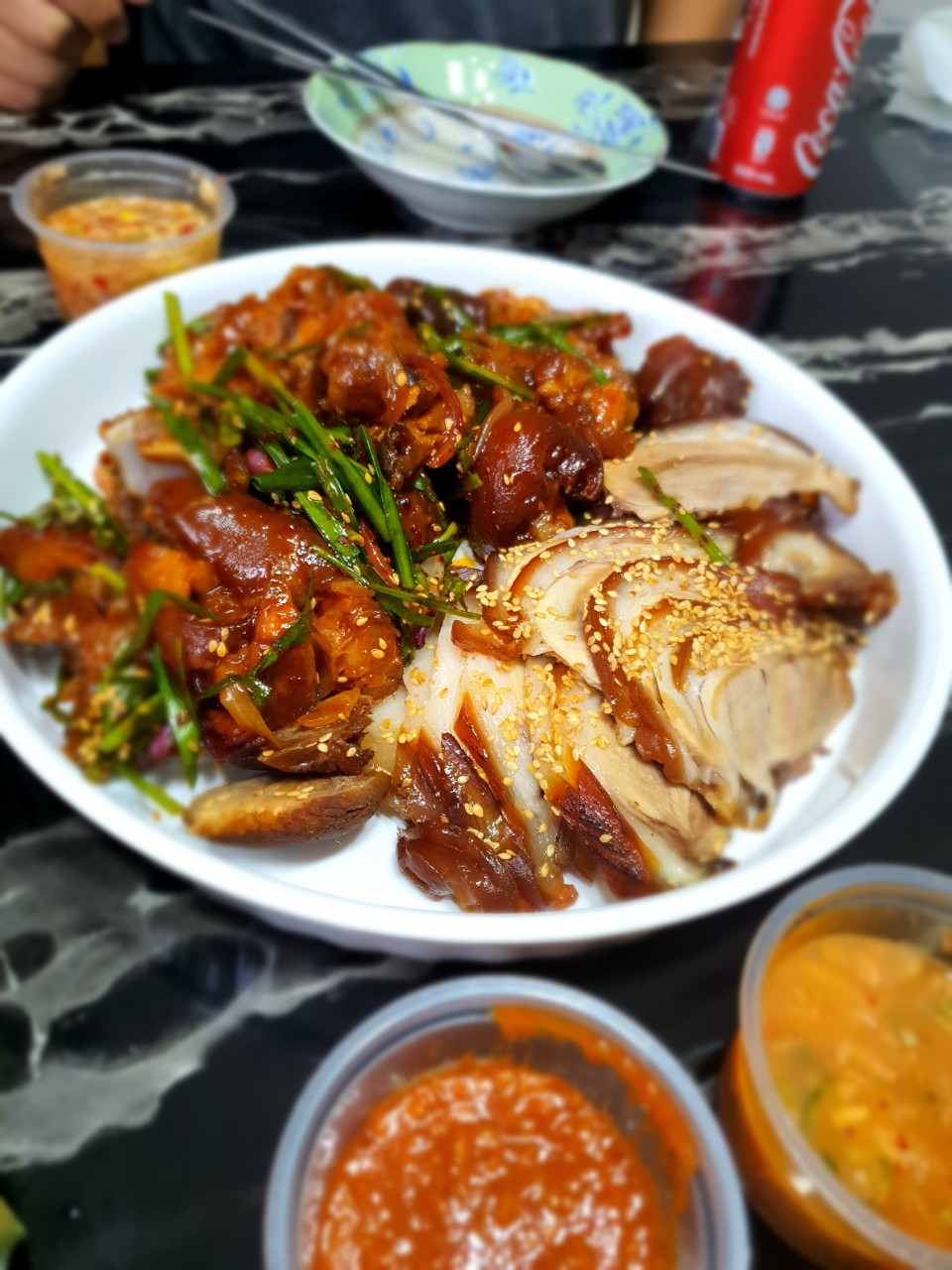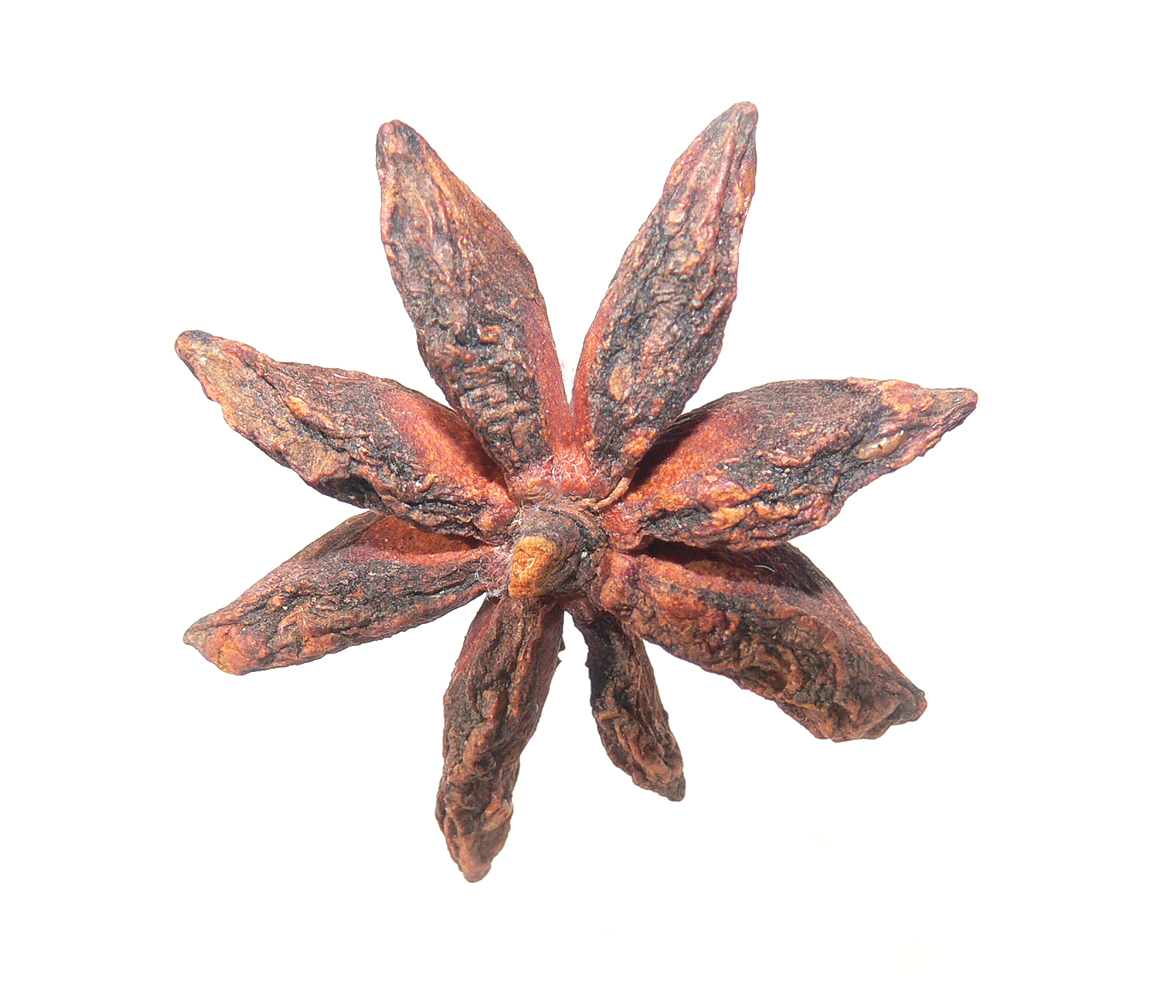|
Bossam
''Bossam'' () is a pork dish in Korean cuisine. It usually consists of pork shoulder that is boiled in spices and thinly sliced. The meat is served with side dishes such as spicy radish salad, sliced raw garlic, ''ssamjang'' (wrap sauce), ''saeu-jeot'' (salted shrimp), kimchi, and ''ssam'' (wrap) vegetables such as lettuce, '' kkaennip'' (perilla leaves), and inner leaves of a napa cabbage. ''Bossam'' is a popular dish in South Korea, often served as '' anju'' (i.e. food accompanying alcoholic drinks). To eat, the meat and side dishes are wrapped together in ''ssam'' vegetables, hence the literal meaning of ''bossam'': "wrapped" or "packaged". History ''Bossam'' is traditionally linked with the process of '' gimjang'', during which large quantities of kimchi are prepared for winters. To ensure the commitment of the workers during this labor-intensive process, ''yangban'' (scholar-gentry of the Joseon era) would deliver a pig for a feast. The workers would enjoy boiled pork wit ... [...More Info...] [...Related Items...] OR: [Wikipedia] [Google] [Baidu] |
Ssam
' () are dishes in Korean cuisine where one food is wrapped in another. A common variety is meat such as pork wrapped in a leafy vegetable.쌈 (Ssam) '' Encyclopedia of Korean Culture'' It is often accompanied by the and can also be topped with raw or cooked garlic, , green pepper, or a (small si ... [...More Info...] [...Related Items...] OR: [Wikipedia] [Google] [Baidu] |
Jokbal
''Jokbal'' () is a Korean dish consisting of pig's trotters cooked with soy sauce and spices.Jokbal at It is usually braised in a combination of soy sauce, ginger, garlic, and rice wine. Additional ingredients used can include onion, leeks, garlic, cinnamon, and black pepper. History ''Jokbal'' is presumed to have originated from braised pork, a local food of , where pigs' legs are boiled. The current jokbal is a food that started in Jangchung-dong in the 1960s and is known to have been dev ...[...More Info...] [...Related Items...] OR: [Wikipedia] [Google] [Baidu] |
Doenjang
''Doenjang'' * () or soybean paste is a type of fermented bean paste made entirely of soybean and brine used in Korean cuisine. It is also a byproduct of soup soy sauce production. It is sometimes used as a relish. History The earliest soybean fermentations in Korea seem to have begun prior to the era of the Three Kingdoms of Korea, Three Kingdoms. The ''Records of the Three Kingdoms'', a Jin dynasty (265–420), Chinese historical text written and published in the third century AD, mentions that "Goguryeo people are good at brewing fermented soybeans" in the section named Dongyi, ''Dongyi'' (Eastern foreigners) in the ''Book of Wei''. Onggi, Jangdoks used for doenjang production are found in the mural paintings of Anak Tomb No. 3 from the 4th century Goguryeo. In the ''Samguk sagi'', a historical record of the Three Kingdoms of Korea, it is written that ''doenjang'' and ''soup soy sauce, ganjang,'' along with ''meju'' and ''jeotgal,'' were prepared for the Pyebaek, wedding ... [...More Info...] [...Related Items...] OR: [Wikipedia] [Google] [Baidu] |
Kimchi
Kimchi (; ) is a traditional Korean side dish (''banchan'') consisting of salted and fermented vegetables, most often napa cabbage or Korean radish. A wide selection of seasonings are used, including '' gochugaru'' (Korean chili powder), spring onions, garlic, ginger, and '' jeotgal'' (salted seafood). Kimchi is also used in a variety of soups and stews. Kimchi is a staple food in Korean cuisine and is eaten as a side dish with almost every Korean meal. There are hundreds of different types of kimchi made with different vegetables as the main ingredients. Examples of variants include ''baechu-kimchi'', ''kkakdugi'', '' chonggak-kimchi'', and '' oi-sobagi''. Traditionally, winter kimchi, called '' gimjang'', was stored in large earthenware fermentation vessels, called '' onggi'', in the ground to prevent freezing during the winter months and to keep it cool enough to slow down the fermentation process during summer months. The process of making kimchi was called gimjan ... [...More Info...] [...Related Items...] OR: [Wikipedia] [Google] [Baidu] |
Gimjang
''Gimjang'' (), also spelled ''kimjang'', is the traditional process of preparation and preservation of kimchi, the spicy Korean fermented vegetable dish, in the wintertime. During the summer months, kimchi is made fresh, from seasonal vegetables. For one month, starting from the tenth month of the year, people prepare large quantities of kimchi that will last throughout the winter. ''Gimjang'' was listed as a UNESCO Intangible Cultural Heritage in December 2013 and the 133rd Korean Intangible Cultural Property. Background Kimchi can be eaten as an accompaniment to almost any meal and is an important part of Korean culture. Recipes date back to at least the 13th century, when it was made from vegetables, pickles, and either salt or a mixture of alcohol and salt. Red pepper was added to the ingredients in the 17th century. Modern-day kimchi is typically made from napa cabbage and white radish, although there are hundreds of variations; it may also contain turnip, leek, carrots, a ... [...More Info...] [...Related Items...] OR: [Wikipedia] [Google] [Baidu] |
Banchan
''Banchan'' ( ; ; ) are small side dishes served along with cooked rice in Korean cuisine. ''Banchan'' are often set in the middle of the table to be shared. At the center of the table is the secondary main course, such as ''galbi'' or ''bulgogi'', and a shared pot of ''jjigae''. Bowls of cooked rice and ''guk'' (soup) are set individually. ''Banchan'' are served in small portions, meant to be finished at each meal and replenished during the meal if not enough. Usually, the more formal the meals are, the more ''banchan'' there will be. Jeolla Province is particularly famous for serving many different varieties of ''banchan'' in a single meal. The basic table setting for a meal called ''bansang'' usually consists of ''bap (food), bap'' (, cooked rice), ''guk'' or ''guk, tang'' (soup), ''gochujang'' or soy sauce, ''ganjang'', ''jjigae'', and ''kimchi''. According to the number of ''banchan'' added, the table setting is called ''3 cheop'' (), ''5 cheop'' (), ''7 cheop'' (), ''9 c ... [...More Info...] [...Related Items...] OR: [Wikipedia] [Google] [Baidu] |
Oyster
Oyster is the common name for a number of different families of salt-water bivalve molluscs that live in marine or brackish habitats. In some species, the valves are highly calcified, and many are somewhat irregular in shape. Many, but not all oysters, are in the superfamily Ostreoidea. Some species of oyster are commonly consumed and are regarded as a delicacy in some localities. Some types of pearl oysters are harvested for the pearl produced within the mantle. Others, such as the translucent Windowpane oysters, are harvested for their shells. Etymology The word ''oyster'' comes from Old French , and first appeared in English during the 14th century. The French derived from the Latin , the feminine form of , which is the Latinisation (literature), latinisation of the Ancient Greek () 'oyster'. Compare () 'bone'. Types True oysters True oysters are members of the family Ostreidae. This family includes the edible oysters, which mainly belong to the genera '' ... [...More Info...] [...Related Items...] OR: [Wikipedia] [Google] [Baidu] |
Baechu-kimchi
''Baechu-kimchi'' (), translated as napa cabbage kimchi or simply kimchi, is a quintessential ''banchan'' (side dish) in Korean cuisine, made with salted, seasoned, and fermented napa cabbages. * Preparation ''Baechu-kimchi'' is made by fermenting salted napa cabbages with Korean radish, aromatic vegetables, ''jeotgal'' (salted seafood), ''gochugaru'' (chili powder) and various seasonings. Northern varieties are milder and soupier. Southern varieties are saltier and more pungent. Cabbages Korean brining salt, which has a larger grain size compared to common kitchen salt, is used for the initial salting of napa cabbages. Being minimally processed, it serves to help developing flavors in fermented foods. Per water, around of salt is used. Half of the salt is dissolved in water before putting the cabbages in, and the other half is sprinkled in between the layers of napa cabbages that were washed, trimmed, and halved or quartered lengthwise. The cabbages are salted in the br ... [...More Info...] [...Related Items...] OR: [Wikipedia] [Google] [Baidu] |
Daepa
''Allium fistulosum'', the Welsh onion, also commonly called bunching onion, long green onion, Japanese bunching onion, and spring onion, is a species of perennial plant, often considered to be a kind of scallion. The species is very similar in taste and odor to the related common onion, ''Allium cepa'', and hybrids between the two (tree onions) exist. ''A. fistulosum'', however, does not develop bulbs, and its leaves and Scape (botany), scapes are hollow (''fistulosum'' means "hollow"). Larger varieties of ''A. fistulosum'', such as the Japanese ''negi'', resemble the leek, whilst smaller varieties resemble chives. ''A. fistulosum'' can multiply by forming perennial evergreen clumps. It is also grown in a bunch as an ornamental plant. Names The common name "Welsh onion" does not refer to Wales; indeed, the plant is neither indigenous to Wales nor particularly common in Welsh cuisine (the green ''Allium'' common to Wales is the leek, ''A. ampeloprasum'', the national vegetab ... [...More Info...] [...Related Items...] OR: [Wikipedia] [Google] [Baidu] |
Illicium Verum
''Illicium verum'' (star anise or badian, Chinese star anise, star anise seed, star aniseed and star of anise) is a medium-sized evergreen tree native to South China and northeast Vietnam. Its star-shaped pericarps harvested just before ripening are a spice that closely resembles anise in flavor. Its primary production country is China, followed by Vietnam and other Southeast Asian countries. Star anise oil is highly fragrant, used in cooking, perfumery, soaps, toothpastes, mouthwashes, and skin creams. Until 2012, when they switched to using genetically modified '' E. coli'', Roche Pharmaceuticals used up to 90% of the world's annual star anise crop to produce oseltamivir (Tamiflu) via shikimic acid. Etymology and nomenclature ''Illicium'' comes from the Latin meaning "entice" or "seduce".Gledhill, David (2008). "The Names of Plants". Cambridge University Press. (hardback), (paperback). pp 210, 400 ''Verum'' means "true" or "genuine". The name "badian" appears to der ... [...More Info...] [...Related Items...] OR: [Wikipedia] [Google] [Baidu] |
Doosan Corporation
Doosan Corporation () is a corporate holding company headquartered in Euljiro 6-ga, Jung-gu, Seoul, South Korea. History * 1896 Park Seung-jik opened Korea's first modern dry goods store, selling cloth. * 1925 Changed the name of Park Seung-Jik Store Limited to Doosan Store * 1953 Established the Oriental Brewery and began producing OB beer. * 1960 Established Dongsan Construction and Engineering (currently Doosan Engineering & Construction)/Acquired Hapdong News Agency (currently Yonhap News) * 1966 Founded Hanyang Food * 1967 Founded Yoonhan Machinery (currently Doosan Mecatec) * 1969 Founded Hankook Bottle and Glass * 1979 Established Doosan CCK Can Manufacturing * 1980 Founded OB Seagram * 1982 Formed OB Bears (currently Doosan Bears) * 1996 Celebrated 100th anniversary. Announced Doosan Group's new Certificate of Incorporation. * 1998 Incorporated nine affiliates and re-launched the company as Doosan Corporation in September. * 2008 Acquired the Chung-Ang University Founda ... [...More Info...] [...Related Items...] OR: [Wikipedia] [Google] [Baidu] |



